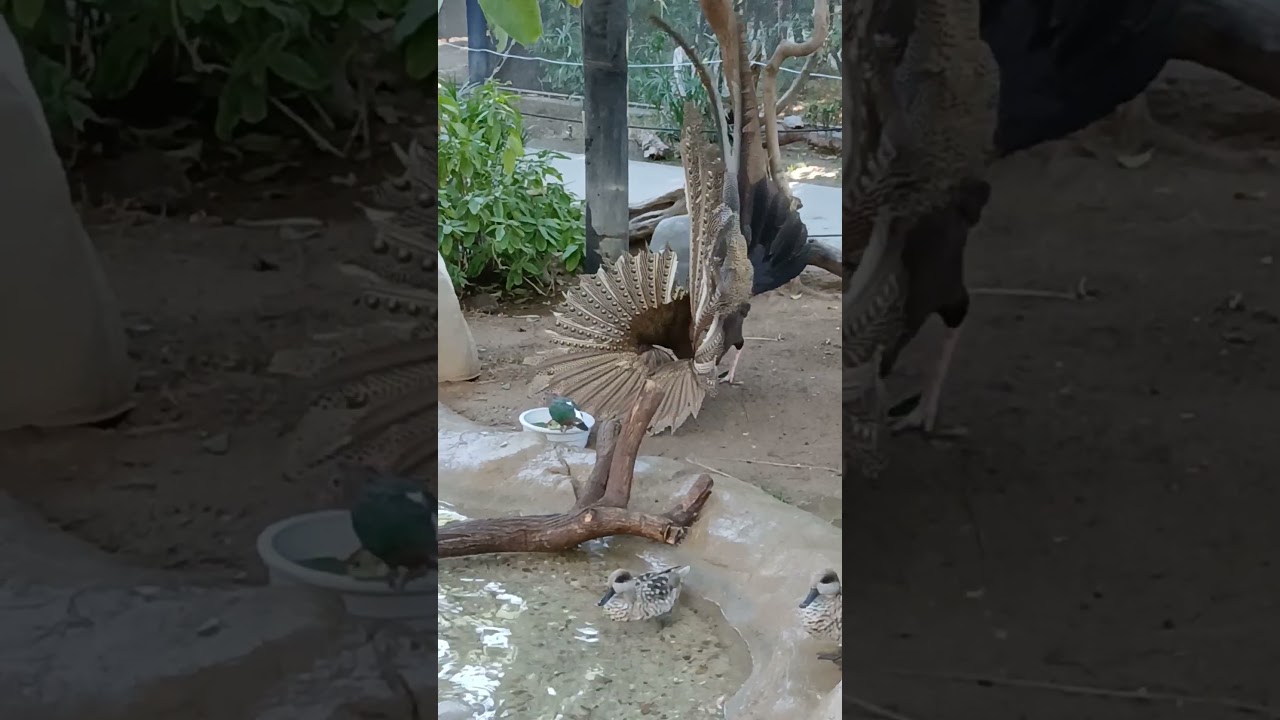- Detailed observation of the Male Argus Pheasant’s courtship dance and its significance in bird communication.
- Explanation of the anatomy and physical adaptations enabling the courtship performance.
- Conservation implications and habitat requirements of the Male Argus Pheasant.
- The role of zoo management in preserving the species and promoting educational outreach.
- Scientific insights into the evolutionary significance and trajectory of peafowl courtship rituals.
In the depths of Southeast Asian rainforests, the Male Argus Pheasant transforms the forest floor into his stage as part of a compelling natural display. His courtship dance, one of the most elaborate within the avian world, serves multiple purposes, from attracting females to asserting his strength and suitability as a mate. By examining this dance, scientists gain insights into broader bird communication systems, enabling a deeper understanding of how these intricate displays illustrate both survival and reproductive strategies within avian communities.
The dance is a multi-sensory experience, combining visual flair with auditory signals that highlight the bird’s physical prowess. The Male Argus Pheasant employs an intricate performance characterized by precise choreography. Each movement is a calculated attempt to showcase his vividly patterned feathers, making use of a natural symmetry to capture potential mates’ attention. The dance culminates in a spread of the wings and tail feathers, forming a canopy of resplendent eyespots, meticulously arranged for maximum visual impact.
Physical adaptations play a significant role in facilitating this display. The Argus Pheasant’s feathers are structurally adapted for strength and flexibility, making them ideal for dramatic flair while maintaining functionality for flight. The elongated secondary feathers of the male are particularly remarkable, each adorned with intricate patterns resembling eyespots designed to mesmerize female onlookers. The feathers’ structural composition, reflecting iridescent hues, underscores the importance of these features in avian evolutionary mechanisms. These adaptations are central to the bird’s mating success and offer critical insights into the species’ natural history.
Conservation status and habitat management remain critical issues for the Argus Pheasant. The species faces threats from habitat destruction and fragmentation, primarily due to logging and agricultural expansion. Protecting these environments is vital for their continued survival. Conservation efforts must prioritize safeguarding rainforest ecosystems to maintain the natural habitats these birds depend on. Understanding the ecological niche of the Argus Pheasant highlights the intertwined fate of wildlife and their environments, emphasizing habitat preservation as central to avian conservation.
Zoo management plays an indispensable role in preserving the Argus Pheasant. Through captive breeding programs, zoos aim to bolster declining populations and reintroduce individuals into secure natural habitats. These institutions also serve as hubs for public education, raising awareness about the challenges these birds face. By showcasing the Argus Pheasant and providing educational materials, zoos contribute to a broader understanding of species conservation. Interactive exhibits and informational sessions are tailored to increase public engagement, emphasizing the importance of preserving biodiversity for future generations.
The significance of the Male Argus Pheasant’s courtship dance extends beyond mere aesthetic appreciation. These displays are critical in understanding the evolutionary progression of mating rituals among peafowls. Such rituals may serve as barometers for evolutionary pressures, reflecting how environmental changes drive adaptations in behavior and anatomy. By studying these displays, scientists gather data on sexual selection—a major force in evolution that can shed light on other complex mating systems across species. These evolutionary perspectives enhance our understanding of biodiversity and provide clues about ecosystem health and resilience.
The Male Argus Pheasant’s dance is a reminder of nature’s complexity and the perpetual dance of survival and attraction that defines so many species. It’s more than just an alluring spectacle; it is a demonstration of life’s intricate interdependencies and a call to action in conserving these wondrous creatures and their habitats. Through ongoing research, wildlife conservation efforts, and education, we can support the continued existence of this magnificent bird and ensure that future audiences can witness the breathtaking dance of the Male Argus Pheasant. Engaging with these aspects not only furthers our scientific knowledge but also equips us to make informed decisions about biodiversity conservation and sustainable management of natural resources.
*****
Source Description
If you’ve got it, flaunt it! This male argus pheasant seen here is performing a courtship dance. In this video, he’s practicing on an emerald dove who is grabbing a bite to eat. Special thanks to Animal Care Specialist Kristi for sharing this video!


